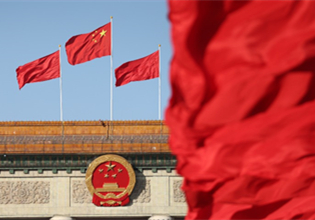Inner Mongolia's UHV project sets new electricity transmission record
As of March 24, the ±800 kV Jaruug-Qingzhou Ultra-High Voltage (UHV) Direct Current Transmission Project had transmitted a record 10.11 billion kilowatt-hours of electricity this year, a 49.14-percent year-on-year increase.
This is the first ultra-high voltage transmission line in eastern Inner Mongolia autonomous region. It starts from the Jaruug converter station in Tongliao, Inner Mongolia, and ends at the Qingzhou converter station in Weifang, Shandong province, passing through Inner Mongolia, Hebei, Tianjin, and Shandong.
Since its commissioning in December 2017, the project has transmitted more than 230 billion kWh of electricity across provinces, equivalent to reducing coal transportation by over 98 million metric tons and cutting carbon dioxide emissions by more than 192.5 million tons. This power supply is sufficient to meet the annual electricity needs of 230 million people, providing strong energy support for North China.
According to a representative of State Grid Inner Mongolia Extra-High Voltage Company, the Jaruug-Qingzhou UHV project is a green initiative that promotes clean energy development.
By converting primary energy in Inner Mongolia and Northeast China into clean, efficient electricity and transmitting it to load centers in North China, the project facilitates wind power consumption and optimizes energy resource distribution on a broader scale.



 Print
Print Mail
Mail





